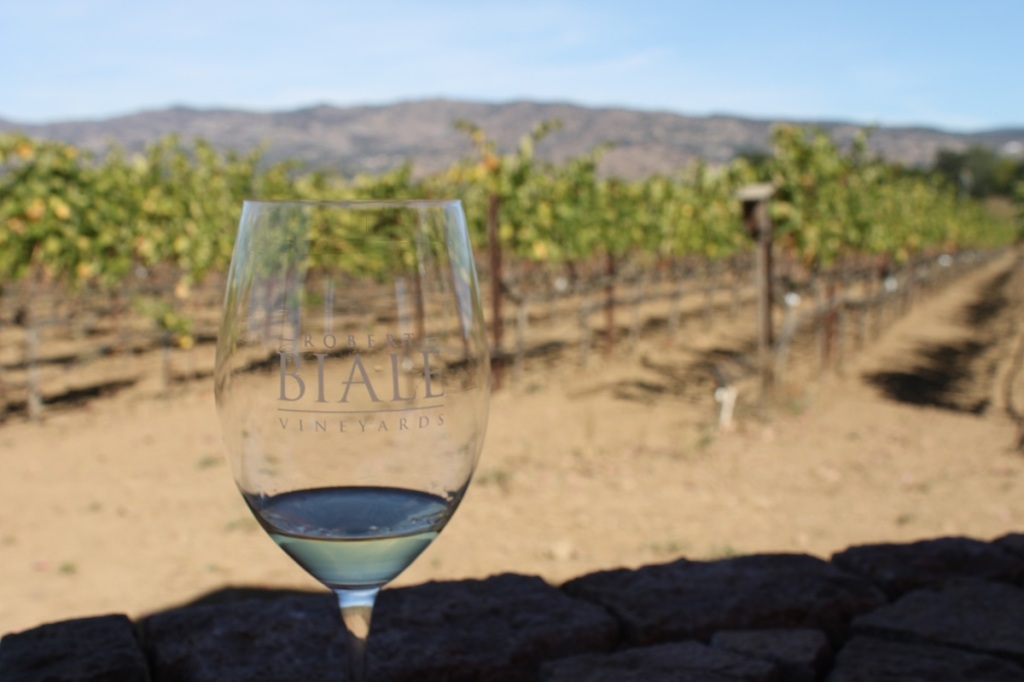
We had talked about a trip to California’s Napa and Sonoma wine regions during 2020, but of course COVID-19 derailed our plans. So this year we decided to take that trip, in the fall to take advantage of cooler temperatures and changing colors in the vineyards.
It would take too many pages to explain the whole trip, so I am focusing on a few highlights and some travel tips for those who would like to plan your own visit. And that alone will take three posts!
We rented an Airbnb house in Santa Rosa, right in the heart of Sonoma Valley. Everything in Sonoma was an easy drive from here on Hwy 101. The trip to Napa required either a drive on a windy mountain road or the southern route that seemed to draw most of the traffic. Still not a bad drive – probably more challenging on the weekends.
North Sonoma favorites
We focused much of our wine tasting in Northern Sonoma, known for Zinfandels, Cabernet Sauvignon and Italian varietals. Many friends who had visited the area were impressed with wineries in the Russian River Valley, Dry Creek Valley and Alexander Valley.
The first winery where we scheduled a tasting turned out to be my favorite of all. Dry Creek Vineyard was recommended by a friend, and it did not disappoint. This family-owned vineyard, one of the first in the Dry Creek Valley, just celebrated its 50th anniversary.
We reserved a tour and tasting, and we were greeted by our guide Gabriella. Since it was a weekday, there was only one other couple on the tour. Gabby handed us each a glass, and we started our tour tasting Dry Creek’s signature Fume Blanc.
We strolled through the property and visited several of the vineyards and a flower garden designed to attract beneficial insects – and hummingbirds. We saw the original Zinfandel vines, which are not trellised.
After the tour, Gabby encouraged us to choose a table to complete our tastings. This was the only winery that allowed us to bring in our picnic with our tasting. Gabby even brought out a tray for us with meats, cheese and crackers.
In addition to the Fume Blanc and a 2022 Sauvignon Blanc that we loved, we were very impressed with the 2020 Historic Blocks Zinfandel, which is made from Old Vine Zinfandel grown in the valley.
We started our second day at Truett-Hurst Winery, also in the Dry Creek Valley. We were the first (and only) tasting guests there for our 10 am appointment. Our tasting host Devon said that in cooler weather (it was in the 60s when we arrived), people tend to come later in the day, while during the summer, the crowds tend to come in the morning to avoid the hot afternoons.
We had the tasting patio to ourselves, and Devon encouraged us to take our glass and walk around the property, which is a biodynamic farm in addition to the vineyards. We saw sheep, goats, chickens, many flowers and a vegetable garden. (The 2021 Black Sheep Pinot Noir that we tasted was named for a black sheep on the farm named Pinot.) The creek that borders the property is a salmon breeding ground, and the winery is engaged in efforts to protect the salmon.
The owners of the vineyard purchased the property in the heart of the Dry Creek Valley from another vineyard in 2007. We tasted six wines: a Rose, Pinot Noir, several Zinfandels and red blends. My favorite was a 2021 Red Rooster Zinfandel, which experienced more heat and therefore was more fruit-forward.
We wrapped up our second tasting day at Ridge Vineyards in Lytton Springs (there’s another location in Cupertino, overlooking the Bay Area). Tastings are held at tables or lounges in a covered outdoor area. This winery is known for its sustainability practices: Organic grapes, Old Vine Zinfandel, solar panels, water reclamation and reuse.
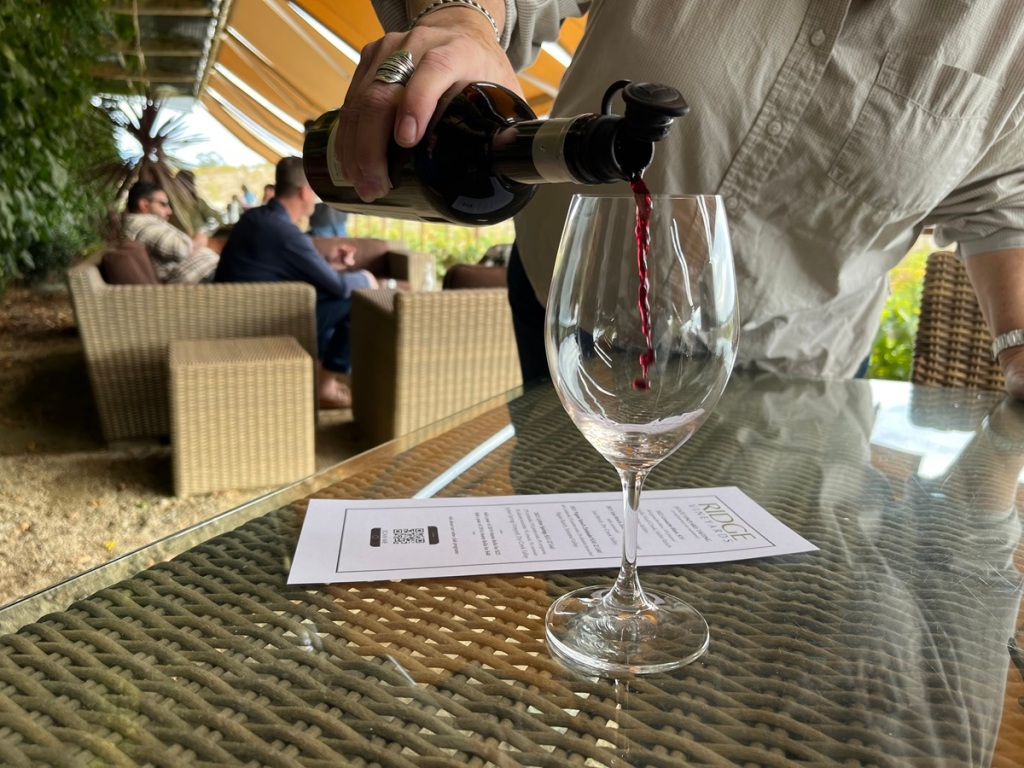
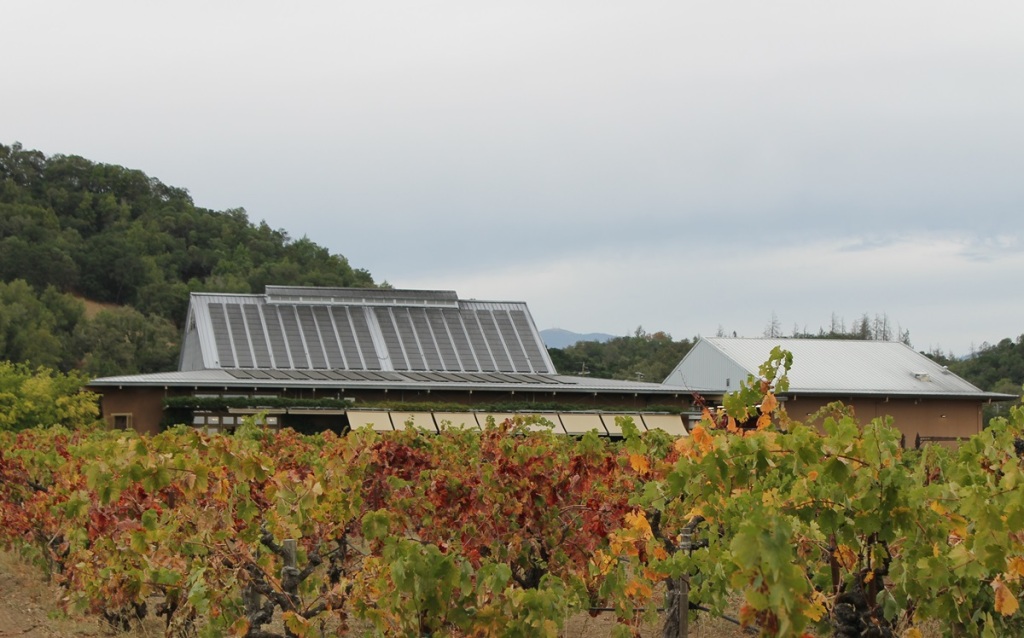
From a distance, this winery with its organic, old vine grapes, looks like a spaceship sitting in the vineyard. In addition to the outdoor tasting space overlooking hills and vineyards, there is a small indoor tasting room.
Our tasting hostess Elizabeth told the story of how she came to California after tasting the Pagani Ranch Zinfandel from Ridge. Once she was living in the area, she told the winery staff that she wanted a job. It took several years to convince them she was serious, but she finally got the job she wanted as a tasting host at Ridge.
Best views
When you think of a winery with a view in North Carolina, you usually think of being up high, overlooking other mountains and valleys. In Napa and Sonoma, some of the best views are from the valleys, looking up. While we saw such views from many wineries, two that really stand out for the views are Biale Vineyards and Silver Oak Vineyards.
Biale is a family-owned winery right outside the town of Napa. The winery was started by an immigrant family who bought the farm in the 1920 and continued selling grapes from the vines for years before starting their own winery.
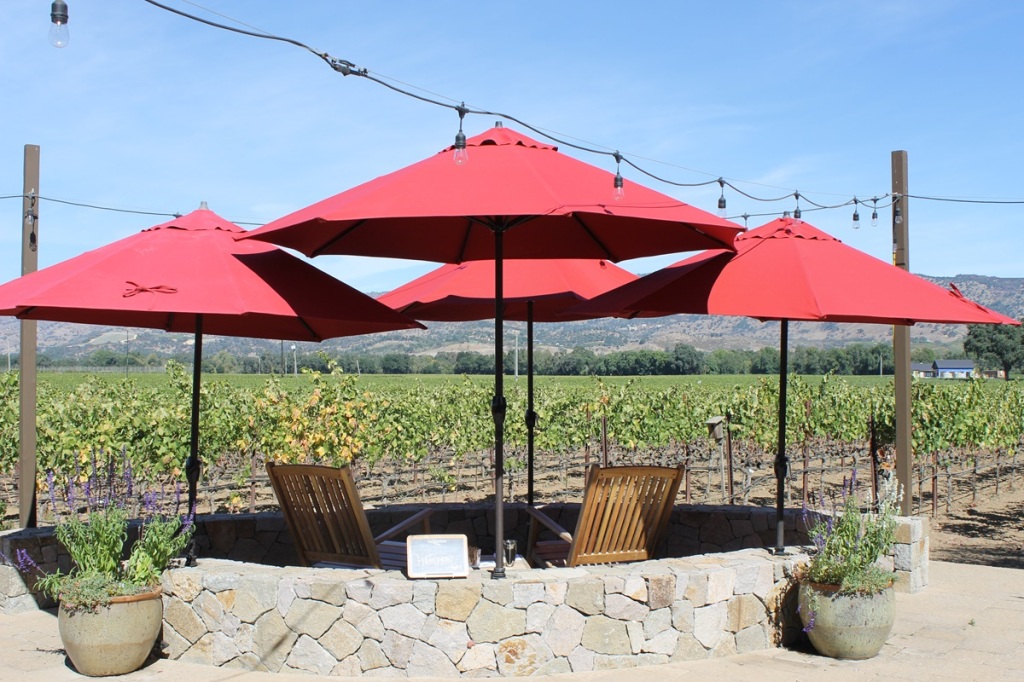

Black Chicken is the name of one of the signature Zinfandels produced here. The name goes back to Prohibition, when the family produced a small amount of Zinfandel sold to locals. “Black Chicken” became the code name for those seeking some of the Biale wine. In honor to this tradition, there is a real black chicken in a coup outside the winery, with a sign that says, “Beware of the black chicken!”
We had the prime location for a tasting – two shaded wooden seats overlooking the vineyards and nearby mountains. The sun was at our backs, and gradually crept into our space. It appears that most of the tasting space is outside on the patio in a beautiful setting.
Our host Stephanie poured six wines, mostly the winery’s signature Zinfandels that come from various vineyards across Napa Valley. The two Zins that we enjoyed the most were the 2021 Black Chicken and the 2021 Aldo’s Vineyard.
We were afraid we might not make it to our Alexander Valley tasting at Silver Oak Cellars, due to an unfortunate car-cow encounter that blocked the road. But we were so glad that we finally made it!
Silver Oak is known for it’s Cabernet Sauvignon, so other wines — especially Pinot Noir — are produced by sister winery Twomey Cellars, and we were able to taste both. On the drive in to the tasting room, we saw beautiful bunches of bluish Cab grapes still hanging from the vines.
We tasted our wines on the patio overlooking the vineyards and mountains beyond. Our tasting host told us that several years before, California’s infamous wild fires had come close to the facility, but they were so grateful to the firefighters who held the fire back.
The views are gorgeous, and after tasting, we visited a culinary garden outside the tasting room and even got a peak into the wine library. Silver Oak was the only winery that gave us glasses to take home, which was a surprise. We almost turned them down for fear they wouldn’t make it back to North Carolina, but they actually did survive the trip.
Next post: Sparkling wine, and other things to do in wine country
Final post: Historic and boutique wineries, and tips on visiting CA wine country

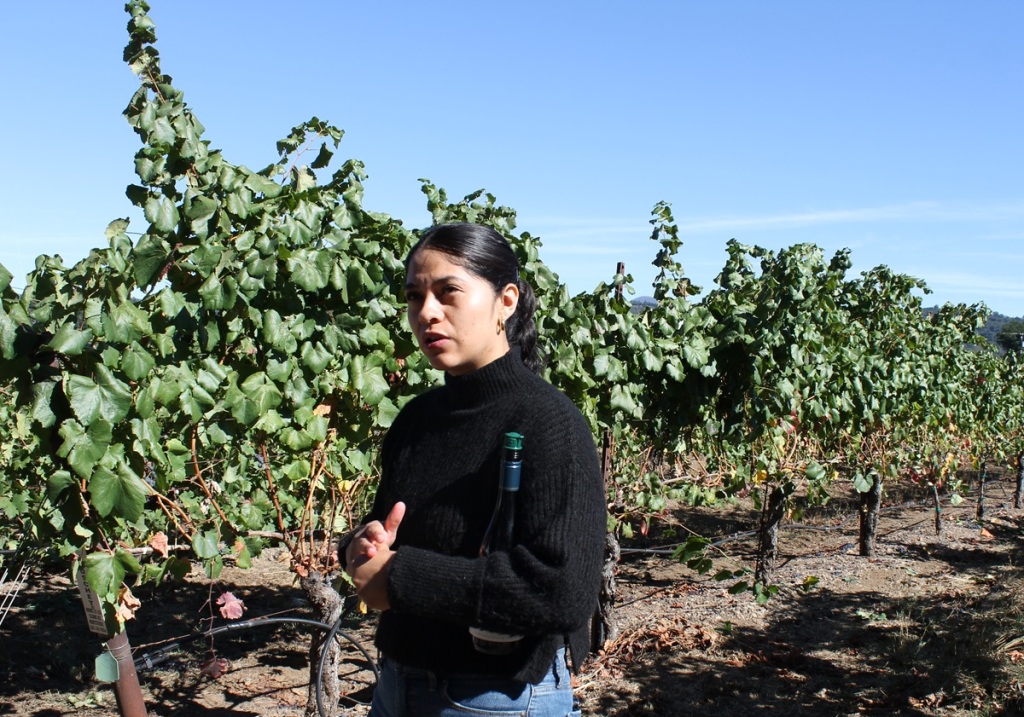
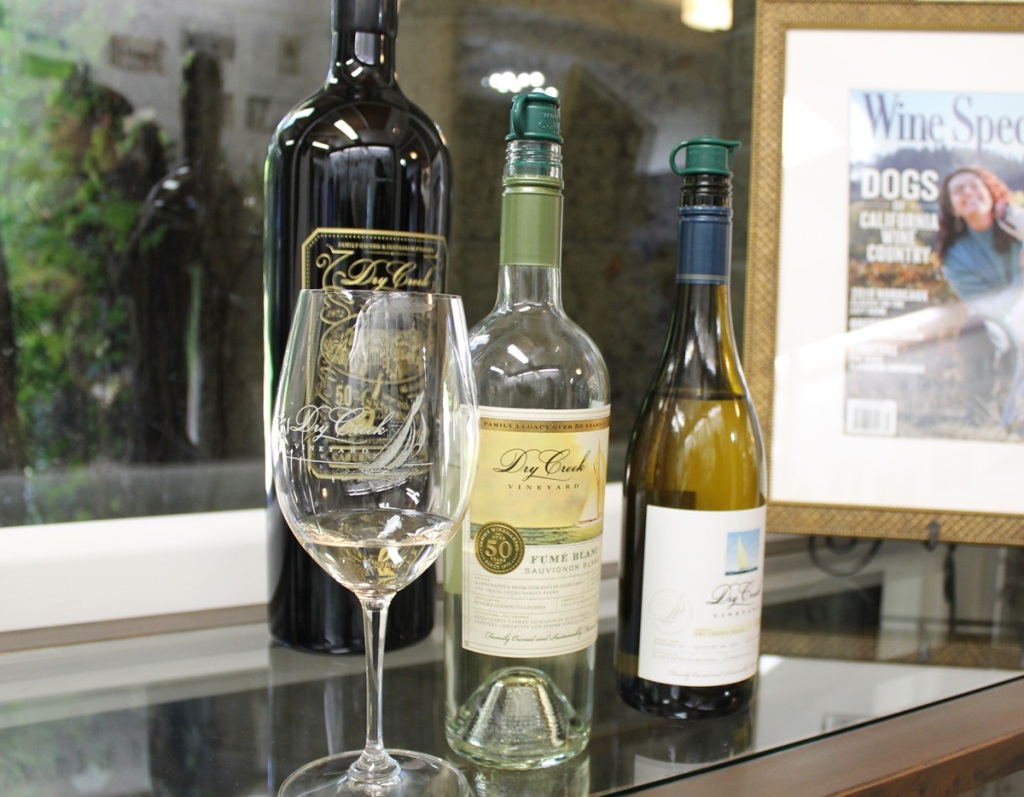
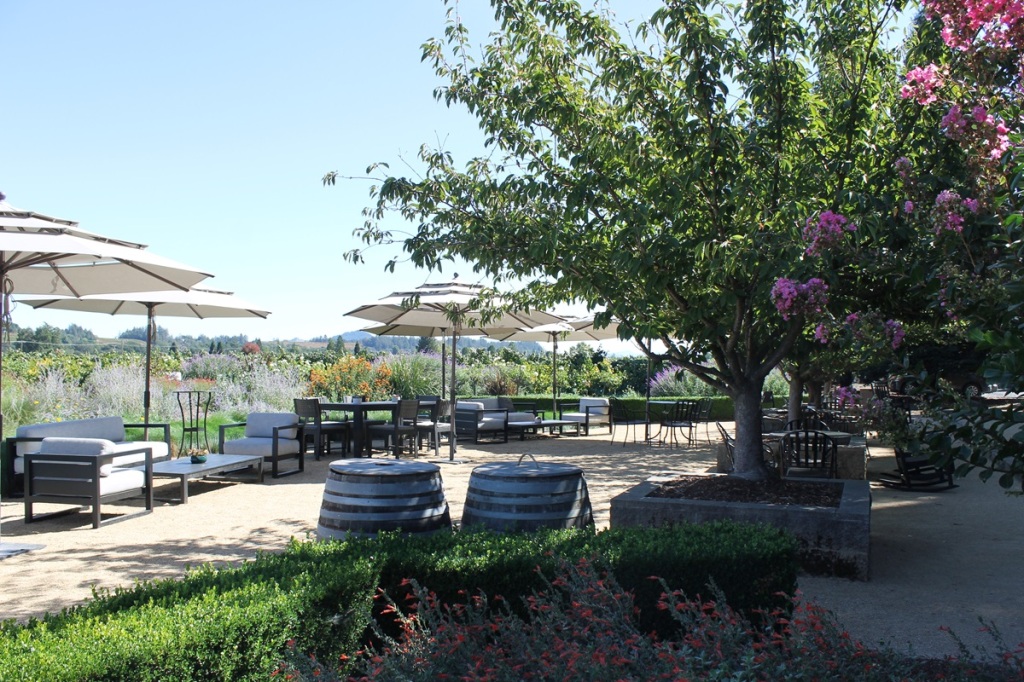
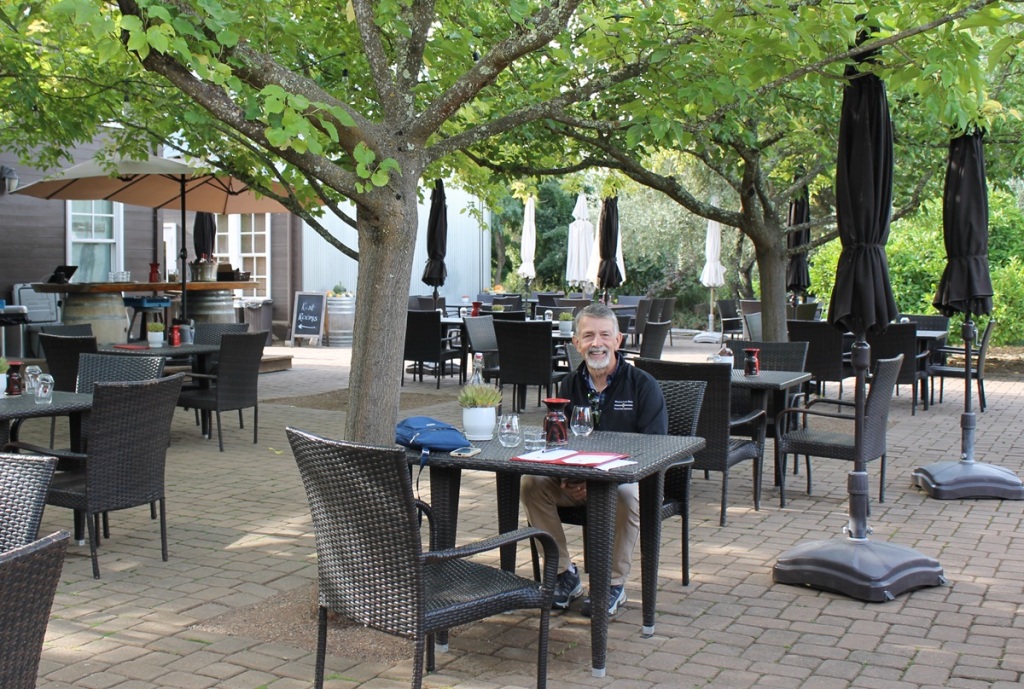
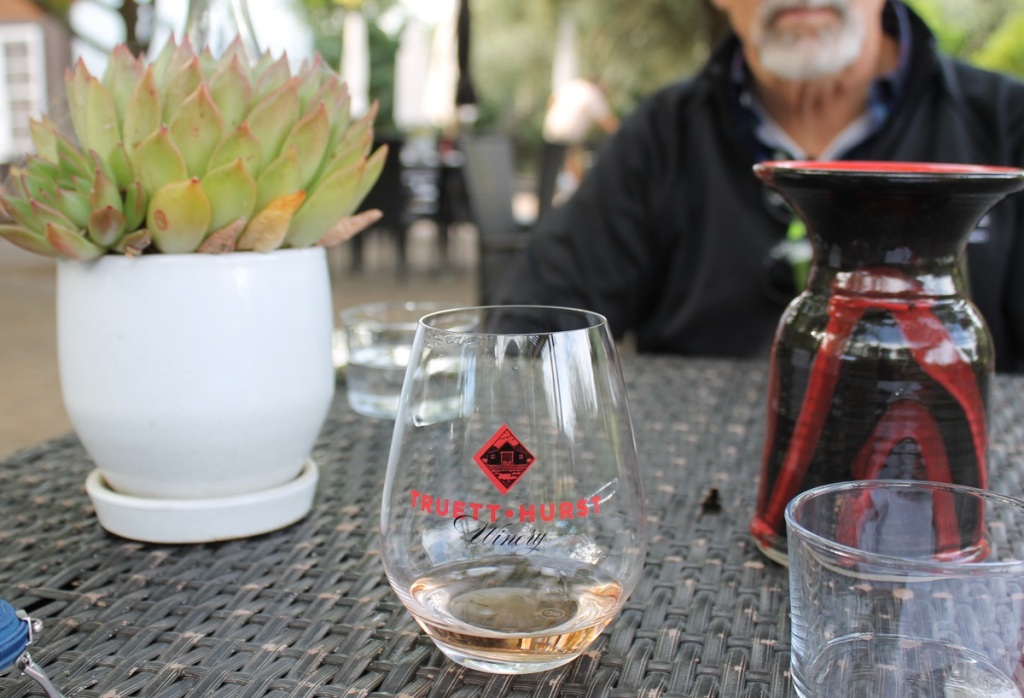
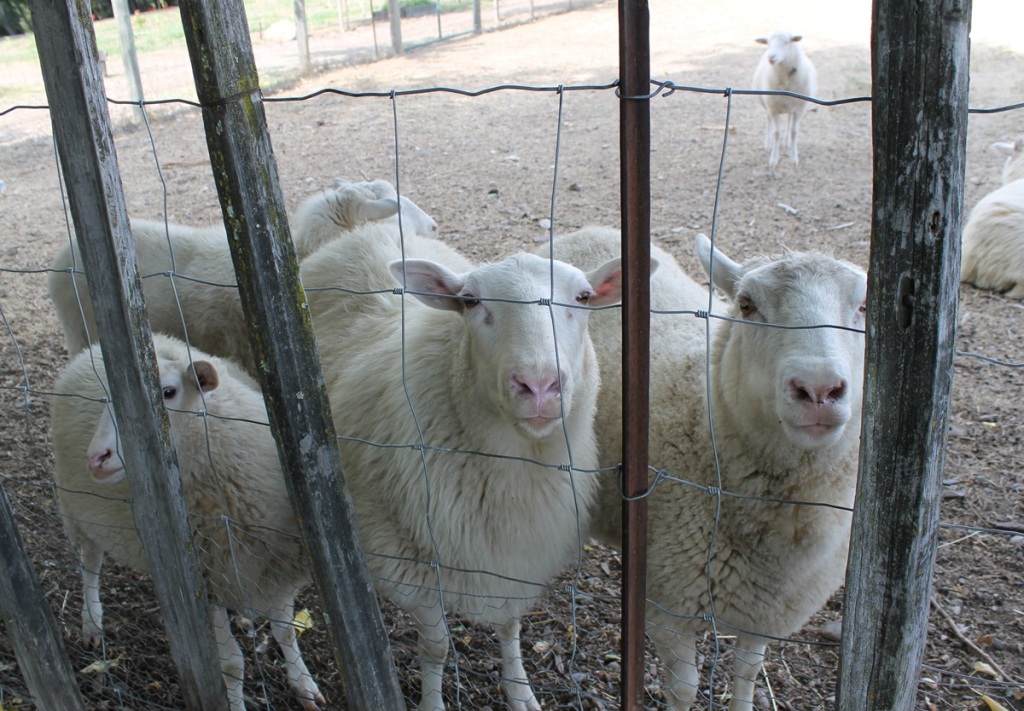
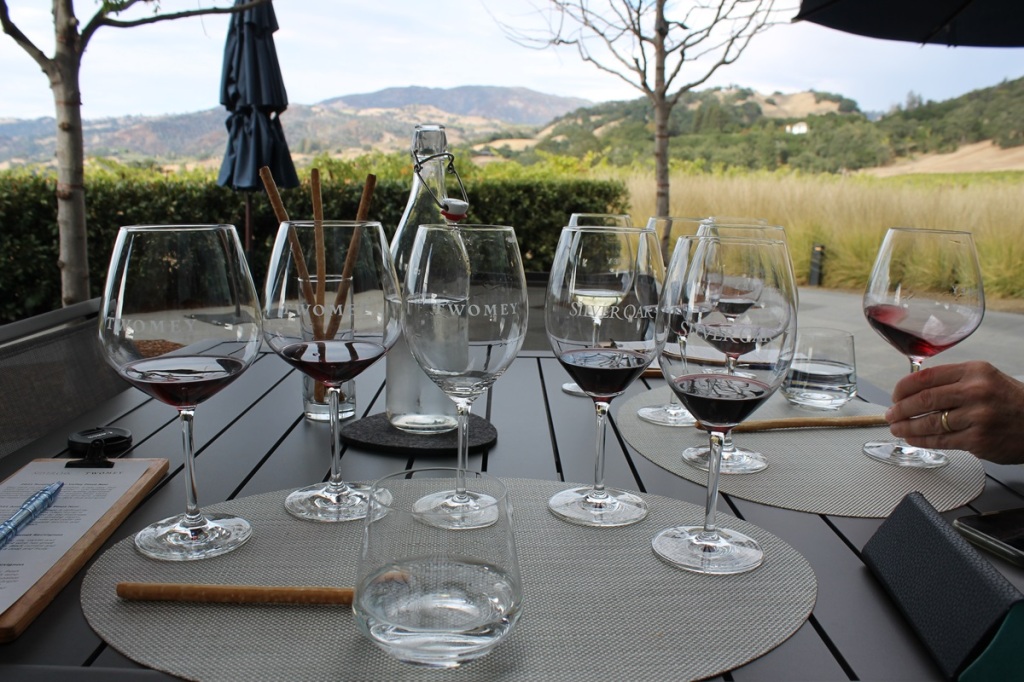
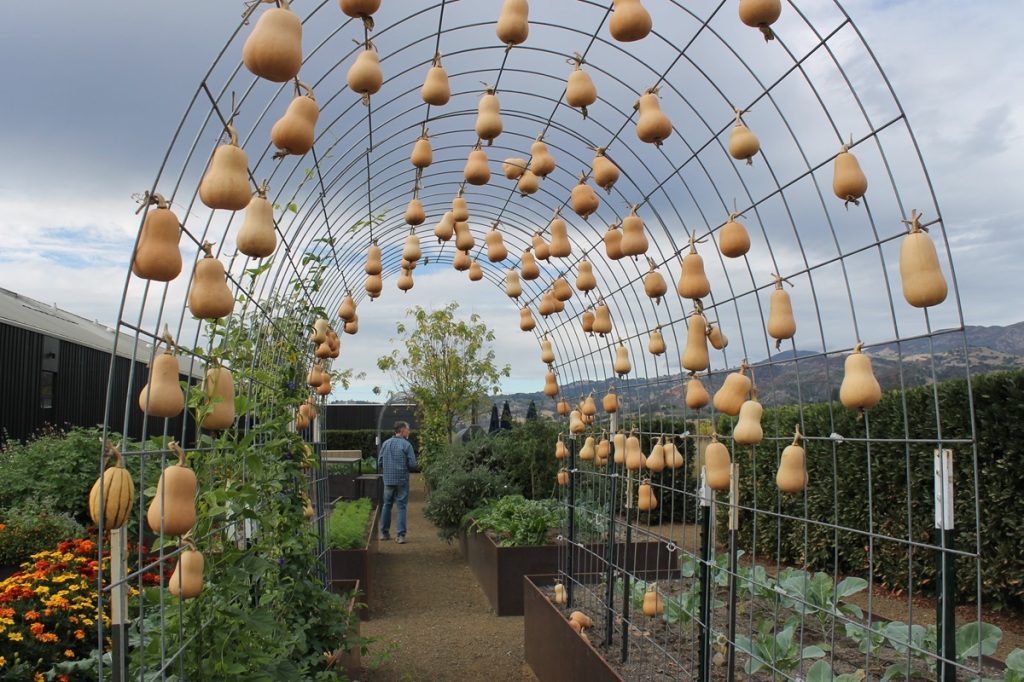
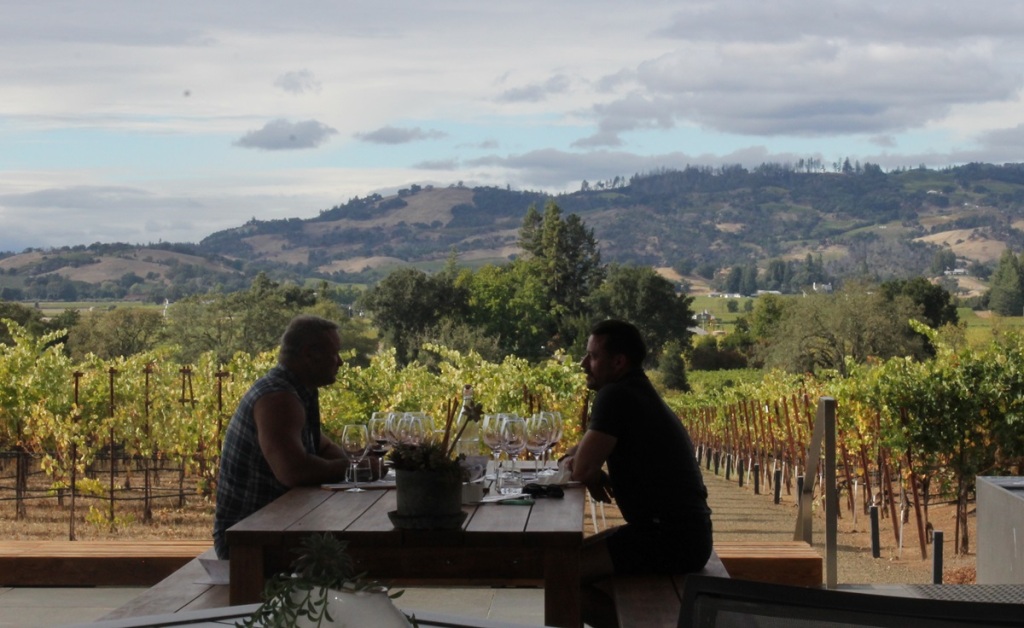
Pingback: Napa and Sonoma wrap up | Tarheel Taps & Corks